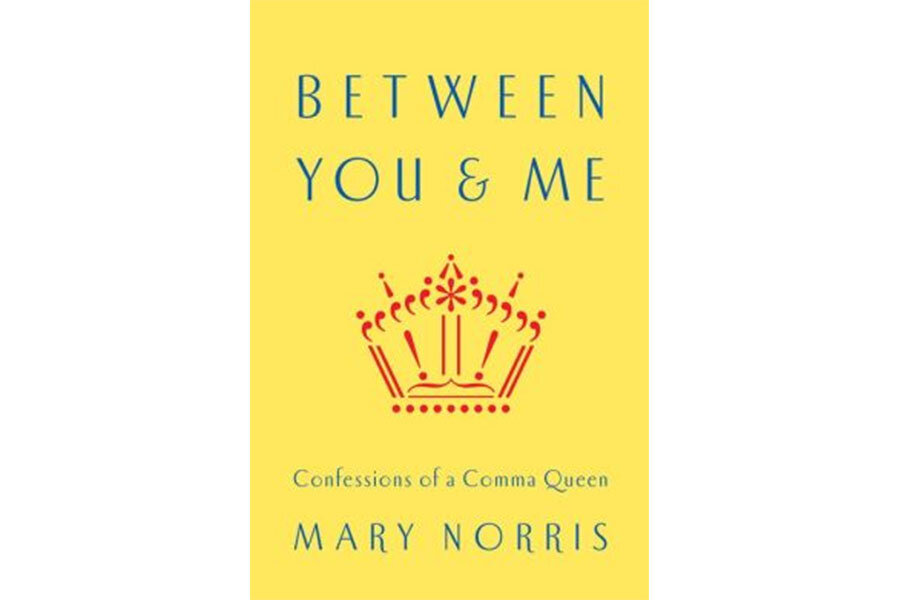Judicious application of the comma shaker
Loading...
In “Between You & Me: Confessions of a Comma Queen,” Mary Norris has written the kind of book that you can pick up and start paging through and then suddenly realize you’ve read practically the whole thing without even trying.
It’s a three-fer: an entertaining memoir, a lighthearted but truly useful book on grammar and style, and a behind-the-scenes look at the workings of one of America’s great literary institutions, The New Yorker. It is especially about the punctuation of this great institution. Ms. Norris comes by her subtitle honestly: She has spent more than three decades in the copy department of the magazine.
Her title suggests conversational intimacy but gently reminds people that “me” is a perfectly fine word, better than “I,” even, as the object of a preposition. She implicitly warns her readers not to panic under pressure and say things like “between you and I.”
And what about the comma? We use it all the time, but it has a dual life. It is used partly to indicate sentence structure, as after an introductory infinitive phrase, for instance: “To see better, he moved toward the window.” But it’s also a sort of stage direction, indicating pauses.
Norris describes the two approaches as “open” or “close” style. “Open” style is stingier with the commas and lets readers figure out for themselves things that a “close” style clarifies with commas. “Open” style arguably reads faster – except when it doesn’t, because you have to read a sentence three times to make sense of it because it doesn’t have enough punctuation.
The New Yorker uses a lot of commas. One of Norris’s colleagues made fun of the house style by keeping a “comma shaker” on her desk, to shake commas onto page proofs the way people shake red pepper flakes onto pizza.
Journalism professor Ben Yagoda, who has written a whole book about The New Yorker, blogged about a sentence from an article it ran about the late Republican political operative Lee Atwater: “Before Atwater died, of brain cancer, in 1991, he expressed regret....” Mr. Yagoda pronounced the magazine “nutty” for the commas after “cancer” and “1991.” Ah, but the argument for them is they set off what’s not essential and make the bones of the sentence easier to see: “Before Atwater died, he expressed regret.”
Fear not, Norris takes superfluous commas seriously, too. When she discovered one in a sentence (“Eve was across the room in a thin, burgundy dress that showed the faint outline of her stomach”) by a writer she much admires, she ended up writing to him about it. He wrote back, and although he didn’t agree that that particular comma was redundant, he knew exactly which one, of all the commas in the book, she meant.
Dear Reader, you will actually learn from this witty memoir cum grammar-and-style seminar – I certainly did – but the process is so gentle that you may think you are merely having fun.






